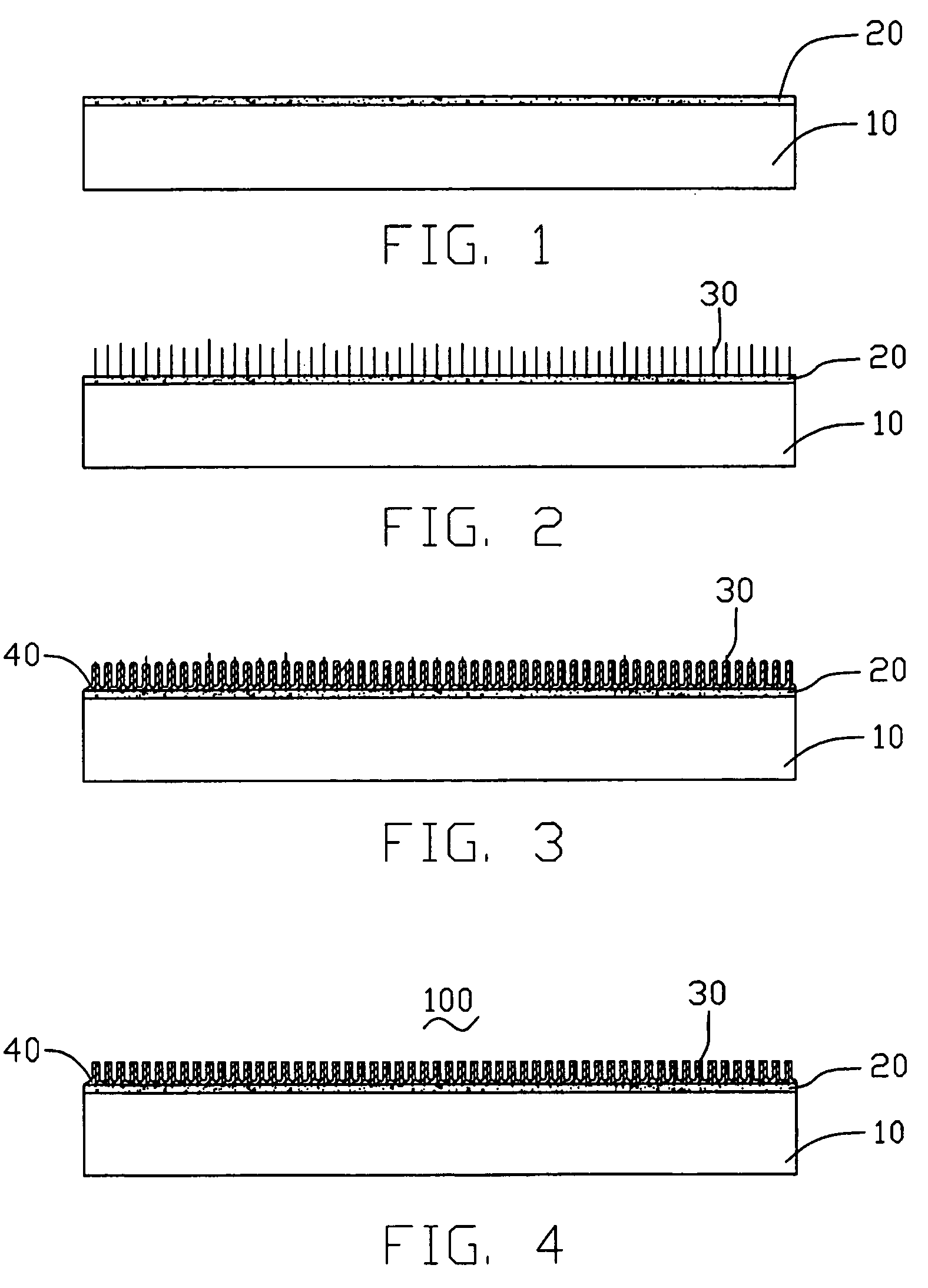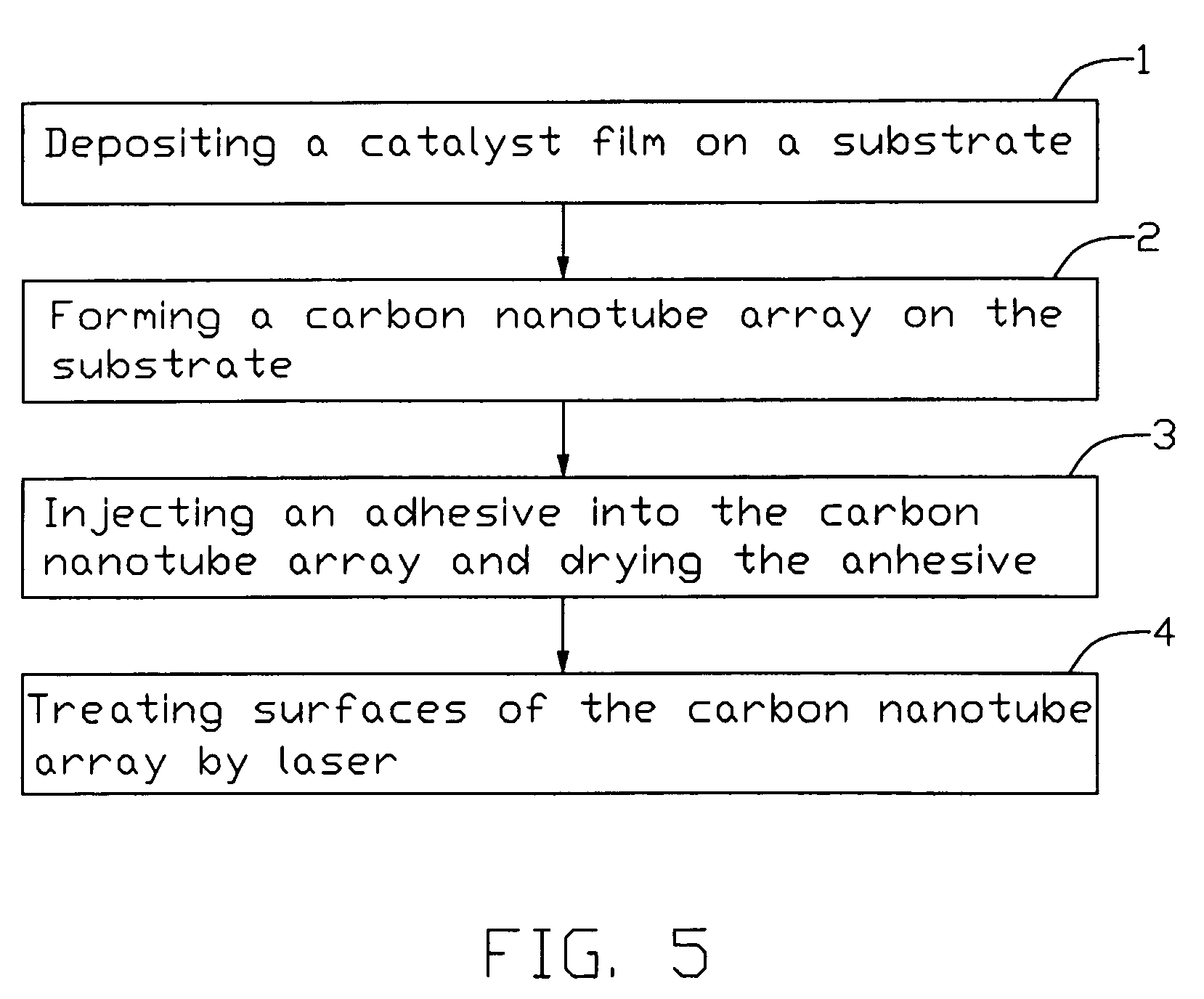Method for manufacturing carbon nanotube field emission device
a carbon nanotube and field emission technology, applied in the manufacture of electric discharge tubes/lamps, mechanical vibration separation, discharge tubes luminescnet screens, etc., can solve the problems of poor electrical contact between carbon nanotubes and substrates, high emission voltages to emit electrons, and inability to reliably carry high electric currents. to achieve the effect of avoiding the separation of carbon nanotubes
- Summary
- Abstract
- Description
- Claims
- Application Information
AI Technical Summary
Benefits of technology
Problems solved by technology
Method used
Image
Examples
Embodiment Construction
[0021]Referring to FIG. 4, a carbon nanotube field emission device 100 of a preferred embodiment of the present invention is shown. The carbon nanotube field emission device 100 includes a substrate 10, a catalyst film 20 deposited on the substrate 10, and a carbon nanotube array 30 formed on the substrate 10. The carbon nanotube field emission device 100 further adopts an adhesive 40 to secure the carbon nanotube array 30 on the substrate 10. The carbon nanotubes are parallel to each other, and tips of the carbon nanotubes are exposed.
[0022]Referring to FIG. 5, a method for manufacturing the carbon nanotube field emission device 100 includes the steps of:[0023](1) depositing the catalyst film 20 on the substrate 10;[0024](2) forming the carbon nanotube array 30 on the substrate 10;[0025](3) injecting the adhesive 10 into the carbon nanotube array 30, and drying the adhesive 40; and[0026](4) treating surfaces of the carbon nanotube array 30 by laser.
[0027]Referring to FIGS. 1, 2 and...
PUM
| Property | Measurement | Unit |
|---|---|---|
| wavelength | aaaaa | aaaaa |
| emission voltages | aaaaa | aaaaa |
| thickness | aaaaa | aaaaa |
Abstract
Description
Claims
Application Information
 Login to View More
Login to View More - R&D
- Intellectual Property
- Life Sciences
- Materials
- Tech Scout
- Unparalleled Data Quality
- Higher Quality Content
- 60% Fewer Hallucinations
Browse by: Latest US Patents, China's latest patents, Technical Efficacy Thesaurus, Application Domain, Technology Topic, Popular Technical Reports.
© 2025 PatSnap. All rights reserved.Legal|Privacy policy|Modern Slavery Act Transparency Statement|Sitemap|About US| Contact US: help@patsnap.com



